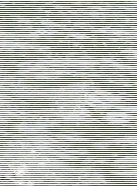Canoe polo shotclock
1 CommentThe shotclock is here to stay in canoe polo games. This post will give some information, list some problems and potential fixes.
Last year and the year before, the shotclock was somewhat being tested at several international tournaments. Sometimes they worked great, sometimes not so much.
This year, the Belgian federation decided to setup the shotclock for the national event in 1st division, and since the first day of the competition was last weekend, we should think back on how that went.
Technical problems
The shotclocks are part of a scoreboard set, with a main clock and 2 satellites that count down from 60 seconds. A signal warns the players when the shotclocks reach 20 seconds, and another signal for the referee when it reaches zero.
Normal operation requires a person at the table resetting the shotclock when possession of the ball changes teams.
The first problem that seemed to occur, and has happened on several international tournaments, is that the operation of the main clock and the shotclock is all handled by 1 person. Failing to reset a shotclock (for example at corner) results in an unfair advantage. This problem however should fix itself when more people get to know the clock operation.
The second problem is worse. There was only 1 pitch equipped with a shotclock, and from the second game played there, the clock had technical difficulties. The shotclocks didn’t reset, the main time halted, etc …
There will always be technical difficulties from time to time, a solution is to equip 2 pitches with shotclocks to reduce the chances that neither work.
Rule problems
One problem was fixed by the Belgian federation before it occurred They justly stated in the briefing that a foul not being awarded, but advantage being shown, should also result in a reset of the shotclocks.
A more difficult problem relates to the technical problems above. What happens if the clock stops working before or during a game. It has happened several times and the decision was made to keep on playing without shotclock.
This, however, resulted in games that gave an unfair advantage to one or more teams.
Example: Team A plays Team B with shotclock. Team B isn’t very good and can’t penetrate the defenses, eventually losing the ball to shotclock every time, team A wins the game with 10 – 0.
Next game, the shotclock doesn’t work, but Team B plays Team C without it.
Team C is about as strong as Team A, but without shotclock, Team B is able to hold the ball for 5-8 minutes, final score 3 – 0.
This could be a problem with the final rankings. No team complained, but the problem is still there.
Placing issues
Obviously, this was the first time the clocks were used in competition, so there are some simple fixes that could dramatically enhance usage.
- Place the clock opposite of the officials table.
The person writing down the goals should be able to see the time, the timekeeper should be able to see if the score is correct and when a timeout is really stopping the clock or not. - Place an instruction sheet at the table.
There was none, usually operation is easy, but not when problems occur. - Have a technical person on standby.
- As stated before, have at least 2 pitches with shotclocks for redundancy.
Conclusion
The shotclock do improve game-play in my opinion, and I believe they are here to stay. But organisation has to make sure they run smooth, or they can be the cause of a lot of frustrations.




